Fjordmosen at forest Nørreskoven Als
Visit this diverse natural area on the east coast of the island of Als. Where forest, beach and meadows offer you an incredibly varied wildlife and a wealth of different plants.
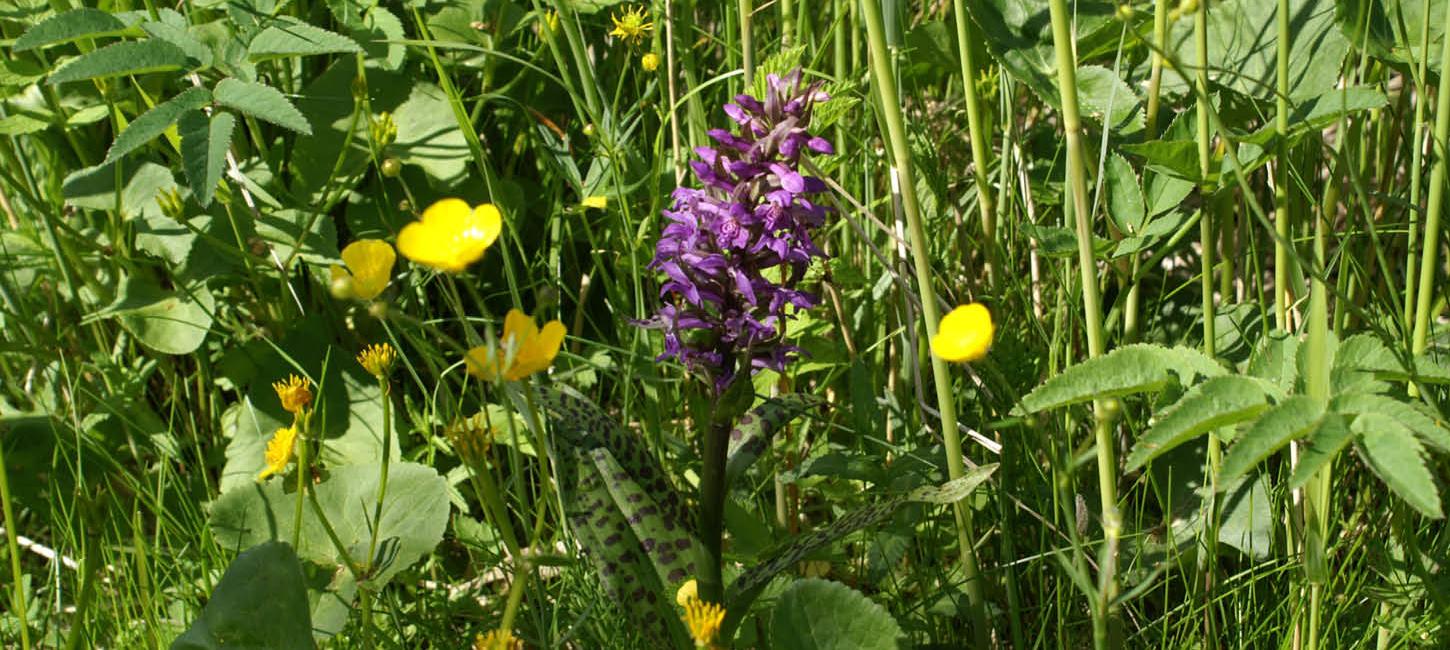
The wild orchids in Denmark are beautiful exotics and protected.
Orchids require very specific conditions to grow, so take your camera on the trip and capture the flowers instead of picking them or digging them up and letting them die at home in your garden.
If you are not a great expert, it can be difficult to find out which wild orchid you have photographed and here it can be important to also have a photo where the leaves are visible! At Naturbasen and inaturalist you can post pictures and register your find.
If you are in doubt, there is almost always one of the other users who can help further, and either confirm your suggestion or tell you which species it is. At the same time, you participate in the registration of the diversity in the Danish nature and can share photos for the enjoyment of others.
The "Guardians of Nature" in Sønderborg not only keep an eye on whether nature is properly managed. They also help to nurture and promote the wild nature in the Sønderborg area via free tours.
Every year in June, an event is held in connection with "The Wild Flower Day" and in addition there are year-round tours with topics such as birds, flowers, bats and mushrooms.
In order to preserve nature's biodiversity, other nature must give way, and you can take part in that work at events such as harvest day or nature conservation in an area where scrub may need to be cleared to make room for, for example, orchids.
We have put together a small presentation where the image of each wild orchid registered in the Sønderborg Municipality is complemented by a description of its appearance and habitat. That being said, it doesn't mean that there aren't more species - they may just not have been found yet...
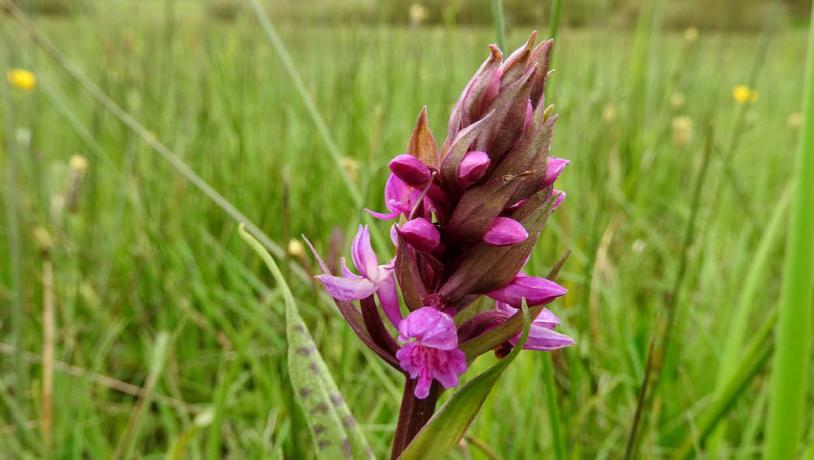
Broad-leaved marsh orchid (Dactylorhiza majalis) is one of the most widespread in our area. Likes to grow on moist meadows and in marshy areas where the groundwater is rich in nutrients and lime, but its demands on the soil conditions make it vulnerable to changes in the place of growth. The plant has a strong stem and the leaves are generally broad with strong spots on the upper side. The flowers are purple and can vary in shade.
Facts about the Broad-leaved marsh orchid
Height: 15-40 cm.
Flowering: Mid/late May - early June
Other: Pollinated by bumble bees
Red-listed in Denmark as LC (least concern)
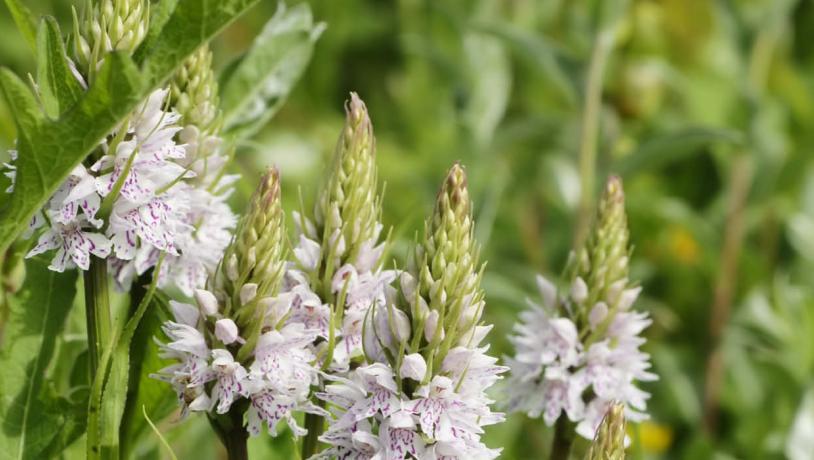
The Common spotted orchid (Dactylorhiza maculata ssp. Fuchsii) is quite rare in Denmark, as it is only registered in East Jutland and on the islands; Lolland, Falster and Bornholm.
This orchid likes to grow in deciduous forests on moist and calcareous soil. The plant has a slender stem and the leaves are broad at the bottom of the plant and become more lanceolate higher up, the leaf spots are wider than long. The flowers are violet to whitish and sit in a pyramidal flower spike.
Facts about the Common spotted orchid
Height: 45-70 cm
Flowering: June-July
Red-listed in Denmark as LC (least concern).
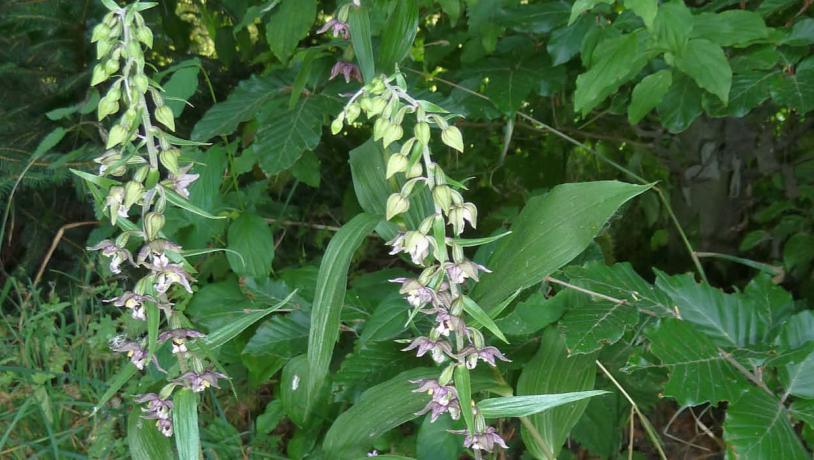
The Broad-leaved helleborine (Epipactis helleborine) is one of the most common orchids in Denmark. This orchid grows in forests and thickets on loam, where the soil is rich in nutrients and lime. The plant has a long and slender stem with green leaves. It can have up to hundreds of flowers that are green with brown or violet insides. The flowers contain a lot of nectar and are perhaps therefore a favorite food for deer.
Facts about the Broad-leaved helleborine
Height: Approx. 100 cm
Flowering: July-September
Other: Pollinated by wasps
Red-listed in Denmark as LC (least concern).
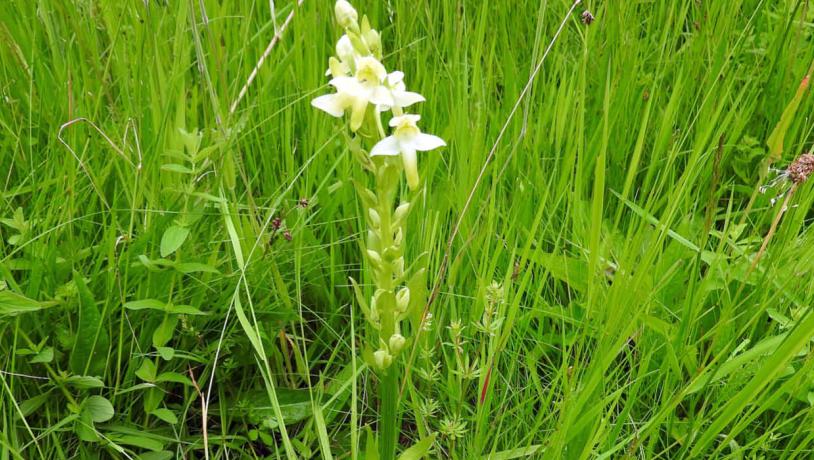
The Greater butterfly-orchid (Platanthera chlorantha) grows on good soil in open forests, thickets, on open meadows and grasslands. It is particularly exposed to overgrowth and changes in forest management.
The plant has two large, green lanceolate leaves at the bottom of the stem. The white flowers have long spurs that are part of the flower. The flower is almost odorless during the day, whereas in the evening it emits a sweet scent to attract the nocturnal moths.
Facts about the Greater butterfly-orchid
Height: 25-40 cm
Flowering: June-early July
Other: Pollinated by moths
Red-listed in Denmark as NT (nearly threatened).
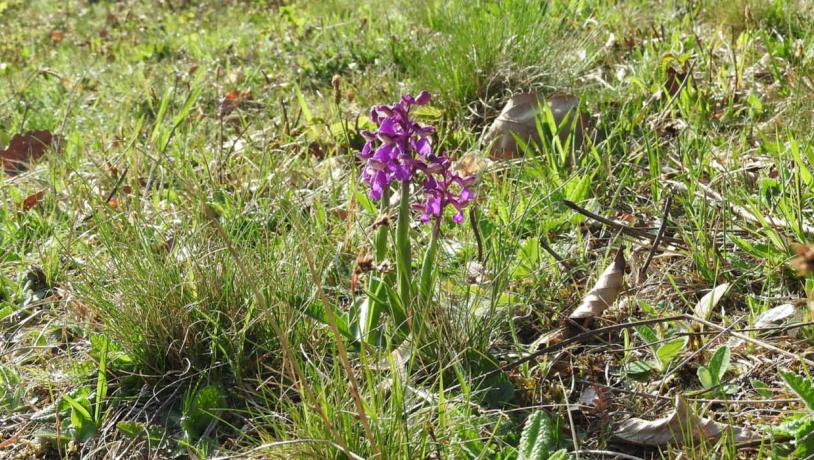
The Green-winged orchid (Orchis morio) has a distinct floral scent that attracts bees. The name derives from a medicinal preparation which in the old days was extracted from the mucilage of the root tubers and used against diarrhea in infants, as well as respiratory disorders and for salves.
The Green-winged orchid grows on moist to semi-dry, calcareous soil. Preferably near the coast on slopes, grasslands and grassy meadows. The plant's flowers are very open and vary in color from dark purple to white. The leaves sit in a rosette around the stem.
Facts about the Green-winged orchid
Height: 8-30 cm
Flowering: May-June
Other: Pollinated by bumble bees and honey bees
Red-listed in Denmark as NT (nearly threatened).
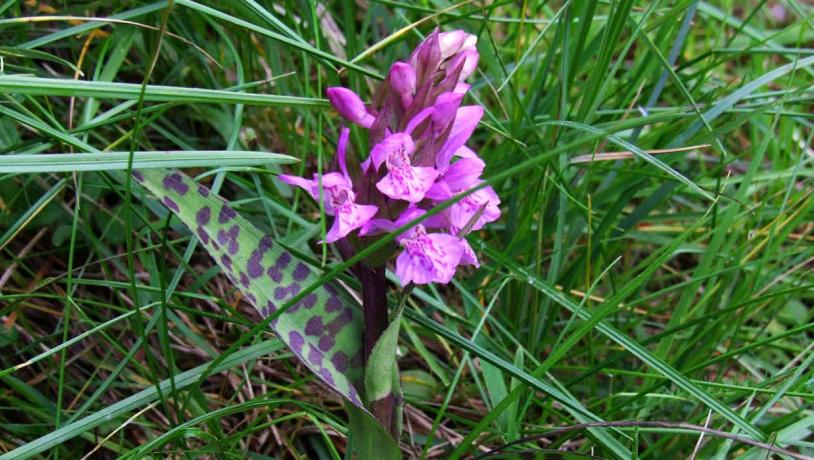
The Heath spotted-orchid (Dactylorhiza maculata) can vary greatly in appearance. The plant emits a faint sweet scent to attract insects for pollination. The Heath spotted-orchid is fairly common in North and West Jutland and is seen here and there in the rest of Jutland, whereas it is rare in the rest of Denmark.
This orchid grows on lean soil in the heath, on meadows and heaths and pastures. The plant has narrow leaves that are usually heavily spotted on the upper side. The flowers are pale violet and often brighter than those of the Common spotted orchid.
Facts about the Heath spotted-orchid
Height: 20-40 cm
Flowering: Mid-June-beginning of August (depending on the place of growth)
Other: Pollinated by bees and large flies
Red-listed in Denmark as LC (least concern).
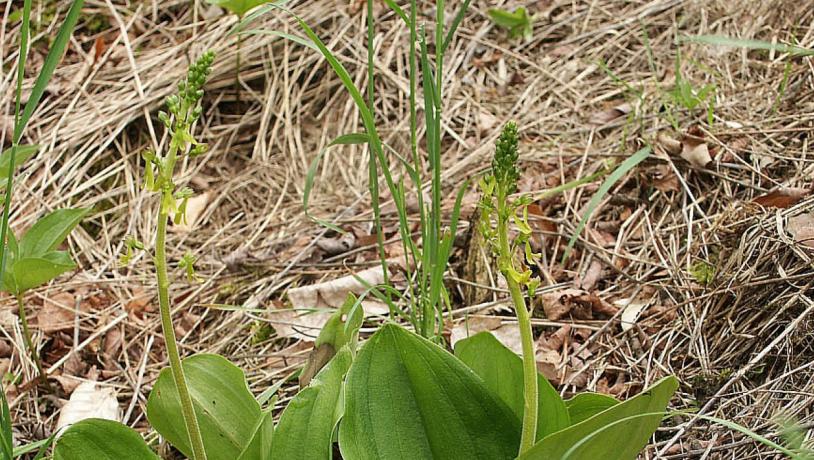
The Eggleaf twayblade (Listera ovata) is one of the few orchid species that can reproduce by shooting from the root. It is found in most of Denmark, but is rare in North and West Jutland.
This orchid grows in open forests and thickets as well as on grasslands. Despite its height, this is probably the most overlooked of the wild orchids in Denmark, as its small, delicate flowers are completely pale green. The plant has two large, egg-shaped leaves at the bottom of the stem.
Facts about the Eggleaf twayblade
Height: 75-100 cm
Flowering: June-July
Other: Pollinated by small insects
Red-listed in Denmark as LC (least concern).
That there are 35 species of orchids in Denmark, and of these, 22 are on the Danish Red List
That all plants, seed heads, and growing sites are fully protected
That, where some parasitic orchid species grow on trees, Denmark's wild orchids grow in the ground
That it requires very specific conditions for each plant to grow and thrive - some of them even live in symbiosis with fungi.
Spotted orchids are pollinated by insects, such as the bumble bee, and after flowering they form capsules with thousands of seeds, which will ensure the population in the future. So just a single flower equals a thousand plants.